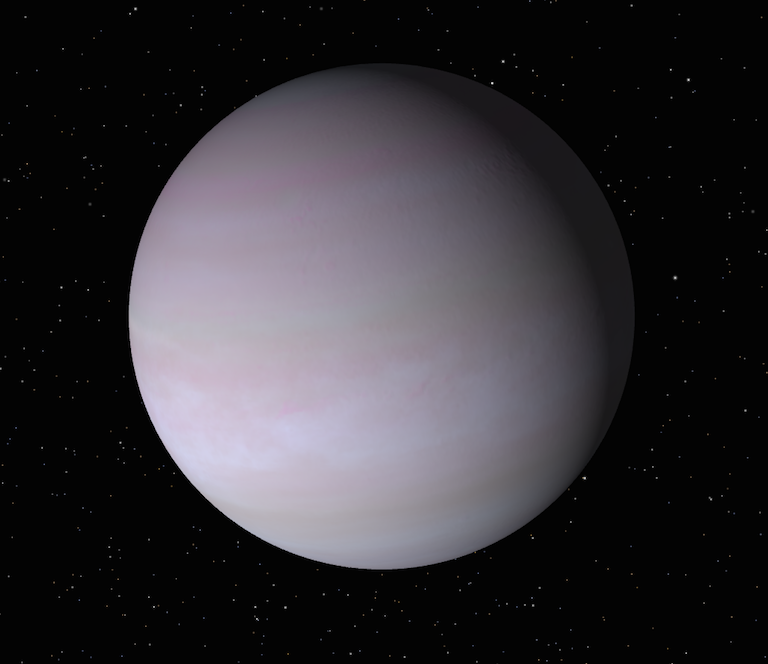Pat Brennan is a science writer for NASA's Exoplanet Exploration Program. He joined JPL in 2015 after a 30-year career as a newspaper journalist.
Alien Vs. Editor | March 20, 2018
The planet that wasn't there (Oh, wait, it was)
A massive gas giant more weighty than Jupiter, orbiting an orange star some 45 light years away, might be the most important exoplanet you’ve never heard of.
A massive gas giant more weighty than Jupiter, orbiting an orange star some 45 light years away, might be the most important exoplanet you've never heard of.
The planet, called Gamma Cephei A b – "Tadmor" for short – achieved its 15 minutes of fame in 1988. At least, among astronomers. It was the first planet to be discovered outside our solar system.
Or it would have been. The discovery was withdrawn by the Canadian team that announced it in 1992, after the data backing it up was determined to be too wobbly for astronomers to be sure the planet was real. Tadmor was added to a growing list of mistaken exoplanet detections that began as far back as the 19th century.
In this case, "wobbly" turns out to be the right word. The astronomers who thought they'd found the first exoplanet had developed a technique that allowed them to track the subtle motions of stars. The amount of "wobble" would reveal the mass of an object orbiting the star, tugging it first this way, then that. The researchers' major advance was precision measurement – capturing stellar movements as small as 43 feet (13 meters) per second. That kind of precision was needed to pick up the tiny wobbles, back and forth, that a large orbiting planet caused the star to make.
Despite their advance, the research team, Bruce Campbell, Gordon Walker and Stephenson Yang, worried that periodic changes in the star's magnetic activity might have looked to them like the gravitational tugs of a planet – in other words, that they might have mistaken jitters within the star for a planet in orbit around it.
They bid goodbye to Tadmor.
Riffle forward through the calendar, and stop in 2002. On-again, off-again Tadmor was on again – this time, its presence solidly confirmed. A team of astronomers that included the original discoverers captured strong evidence of the planet. They used four separate data sets from high-precision "wobble" measurements, known as radial velocity, spanning the period from 1981 to 2002.
The radial velocity method today has notched hundreds of exoplanet discoveries. It's been overshadowed only by the "transit" method, responsible for thousands, that looks for a tiny dip in the light from a star as a planet passes in front of it.
And although the list of confirmed exoplanets was just beginning to grow in the early 2000s, Tadmor already had been eclipsed. A planet called 51 Pegasi b, discovered by Michel Mayor and Didier Queloz, stole most of the spotlight in 1995. It was the first confirmed exoplanet detection to capture worldwide public attention.
Tadmor, of course, continues to orbit its big orange sun, somewhere in the constellation Cepheus, presumably unaware of its near-fame on a small blue planet dozens of light-years away. Time rolls on. Happy 30th anniversary, Tadmor.



